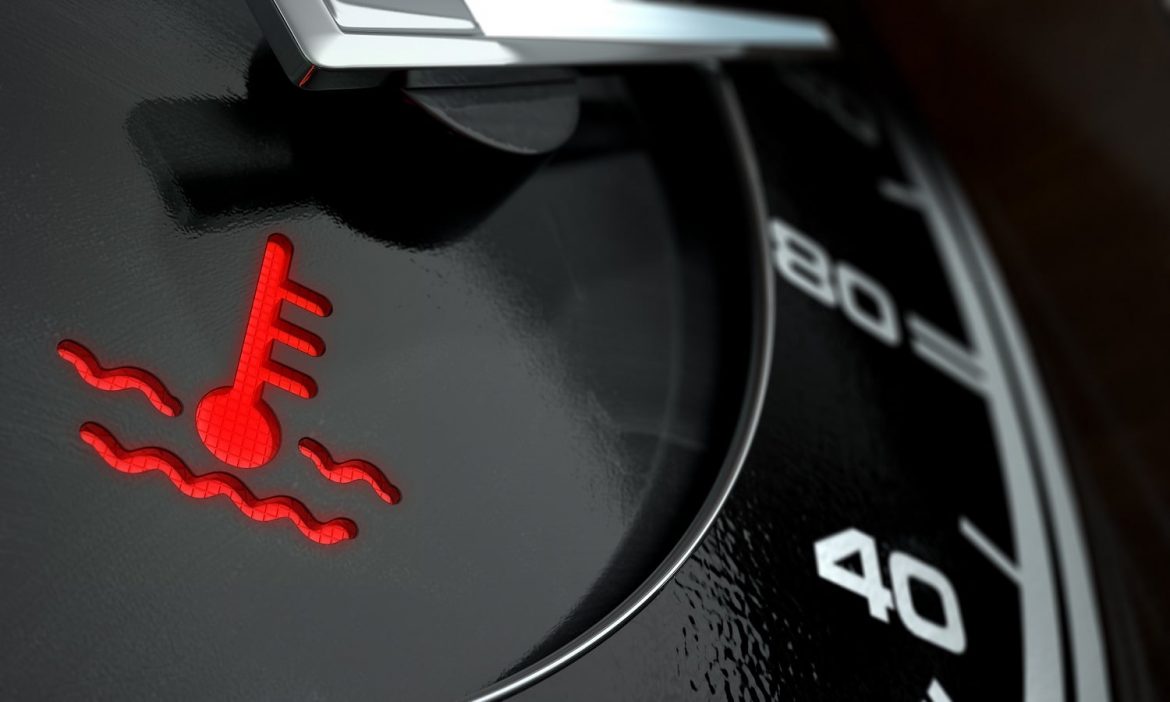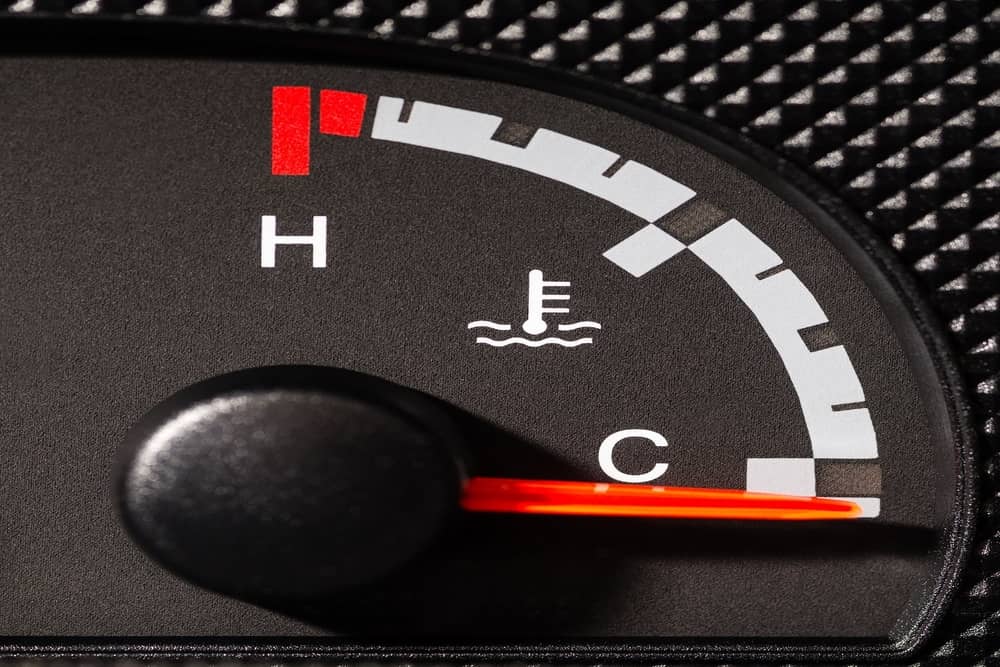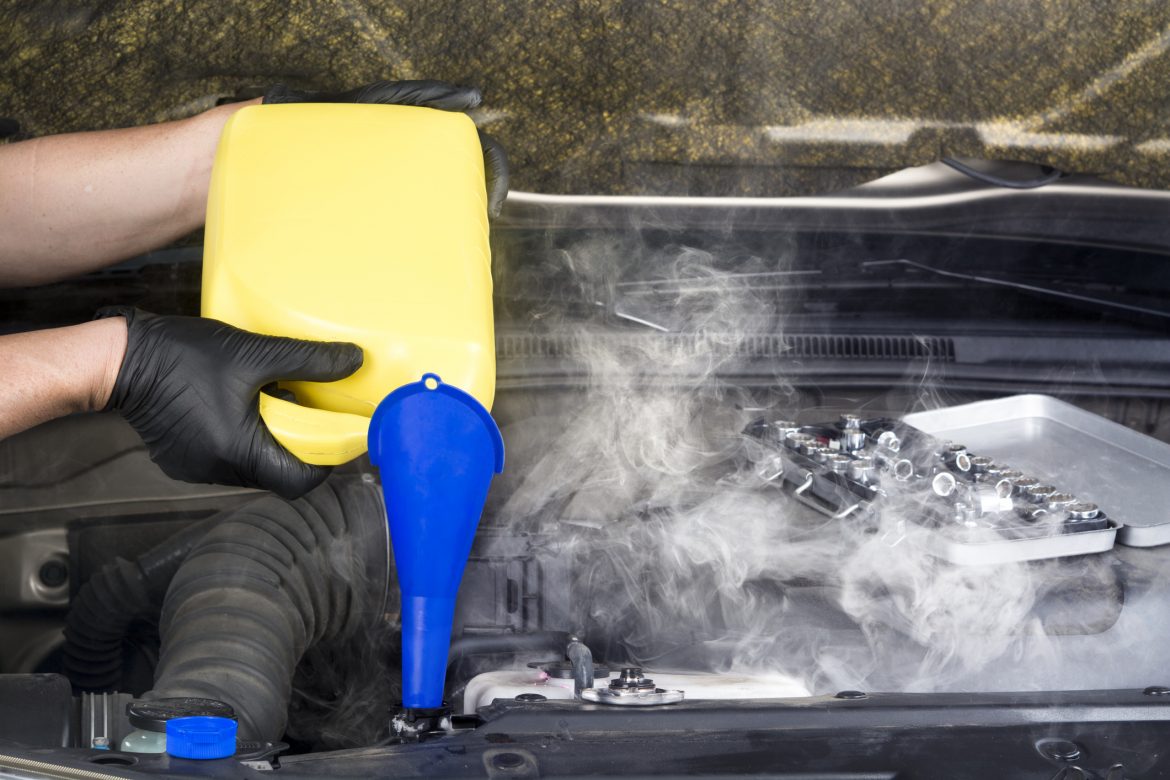The coolant reservoir tank offers temporary refuge for the coolant when it expands as a result of engine heat. When the engine cools and the heat is dispelled from the coolant, it slips out of the plastic reservoir tank and into the radiator.
The coolant reservoir doesn’t actually do anything: it just sits there, ever ready to perform its function. Half the time, it’s empty, awaiting the return of the coolant. That may not sound like a big job, but without the reservoir, the cooling system would run low on coolant, which could spell doom for your engine. So while it might not be very active, the coolant reservoir’s very existence is critical to the health of your engine.
Let’s examine how that all comes together.
Your Car’s Cooling System
A car or truck engine produces intense heat, both because sparks are igniting fuel and air to cause mini-explosions inside it and because parts contained within are moving at hundreds of miles an hour against each other continuously. Most automobile engines operate at roughly 195-220 degrees Fahrenheit. That is about the temperature recommended to brew tea, but it isn’t conducive to a long life for engine parts.
To keep the engine parts from overheating, the cooling system pumps a mixture of water and antifreeze – collectively called coolant – through and around the engine to absorb its heat and cool it down, much the way sitting in a cold bath cools down our bodies. The coolant is then pumped to the radiator where a fan blows the heat out into the atmosphere, dropping the temperature of the coolant mixture for its next cycle around the engine.
The water does the work of the cooling, and the antifreeze plays a couple important roles – keeping the water from boiling while the vehicle is operating or freezing solid in the winter, and fighting corrosion in the radiator and in the cooling system’s hoses and water pump. Water alone would boil and freeze, and antifreeze alone would not cool the engine very effectively. Together as coolant they make a great team and keep the engine running smoothly for thousands of miles.
Overflow into the Reservoir
You may have observed that as it circulates around the engine to the radiator and back again, the coolant is being heated and cooled constantly. As it passes by the engine picking up heat, the coolant expands, backing up into the reservoir. As it releases that heat in the radiator, the coolant contracts, leaves the reservoir and returns to the engine. Absent a reservoir, less coolant would have to be added, creating a deficit in the amount of cooling the system could do.
An engine constantly running too hot won’t last very long. This is why the cooling system is critical to your car’s safe and efficient operation, and why the coolant reservoir is such an important part of the system.
The Effects of a Bad Reservoir
A failing reservoir usually presents symptoms that allow for repair before the problem becomes critical.
Leaking coolant: The most common issue with a coolant reservoir is a breach in the plastic that is allowing coolant to leak out. This is problematic and will eventually lead to engine overheating if allowed to continue. If the leak is small, it may not be obvious. Steam or slow drips may be difficult to discover or pinpoint. More robust leaks produce puddling beneath the vehicle. The liquid in them will be colored and will smell sweet. That is a telltale sign of a coolant leak.
In this case, the exact location of the leak must be determined and the offending part fixed or replaced. Leaks can develop in the plastic reservoir itself, in the coolant reservoir cap or at the connection point between the reservoir and the hoses that carry coolant back and forth into it.
A new tank costs $150-$200 and takes about an hour of labor to replace, for a total of $250-$300 at a service station.
Constant need to add coolant: if you can’t see any evidence of a leak, but your coolant level is always low and in need of refilling, you probably have a small crack that is allowing coolant to evaporate. This can occur anywhere in the cooling system – in the radiator, hoses, or water pump – so it is wise to bring the vehicle in for proper diagnosis. The reservoir is particularly prone to this issue because the coolant is always hot when it backs up into the reservoir. Although these leaks are small, refilling is a temporary fix. Eventually the problem needs to be addressed.
Engine overheating: By the time the engine overheats, there has likely been plenty of fair warning that the cooling system was not working properly, making it more of a result of the problem than a symptom.
Again, the coolant reservoir is not the only source of issues in the cooling system that can lead to engine overheating, so the best bet is to bring the vehicle to a car care professional to diagnose the issue. Many people are surprised to find that the innocent-looking plastic jug in their engine could be the culprit.
One stopgap solution if a vehicle is running hot is to pour a bottle of BlueDevil Engine Cool into the radiator once it has cooled down. BlueDevil Engine Cool’s unique formula is guaranteed to reduce engine operating temperatures by 25 degrees Fahrenheit by decreasing the surface tension of the coolant for improved heat transfer. It eliminates hotspots in cylinder heads and can prevent overheating and extend the life of water pump seals.
To use, simply pour a bottle into the radiator with the engine off and then start the engine with the heater turned up all the way. Let it run for 15 or 20 minutes to circulate. BlueDevil Engine Cool is compatible with all types of antifreeze and safe for all components. It will last for about 20,000 miles.
Overfilling the Coolant Reservoir
We’ve discussed what happens when the reservoir contains insufficient coolant, but overfilling the reservoir can also lead to problems. Your reservoir has two marks, one indicating the level of coolant that should be present when the engine is hot and the other indicating how much should be present when the engine is cold. If the reservoir is overfilled a little, the excess will be expelled into the overflow hose. This is not a big issue for the vehicle but it is harmful to the environment. And, because antifreeze smells sweet, animals may be attracted to the puddles left behind and drink the toxic additive.
Beyond that, a serious overflow can also:
- Blow the reservoir cap – The first symptom of overflowing is a buildup of pressure inside the cooling system. If the heated coolant has no room to expand because the reservoir is already full, expansion will put pressure on the tank. Sufficient pressure could pop the reservoir cap and cause hot coolant to spew out like lava from a volcano.
- Short out the electrical system – The electrical system in your car or truck was not designed to get doused in coolant. Overflowing coolant that gets into the wiring under the hood can cause an electrical failure, which is a catastrophic event for the vehicle. Electrical damage can prevent a car from starting and cause malfunctions in the headlights, brake lights, battery, radio and more. This is a rare event, because wires are insulated and overflow would have to be significant even to reach exposed wires, but why take the chance? Just follow the directions when refilling the coolant.
Oil in the Coolant Reservoir
If you open the coolant reservoir and find motor oil mixed in, that’s a very bad sign.
The most likely culprit is the three words no car or truck owner wants to hear: blown head gasket. The head gasket keeps engine fluids away from combustion parts. When the head gasket malfunctions, oil can get into the coolant, and vice versa. Fixing a head gasket is absolutely necessary and requires taking apart much of the engine, which can cost around $1500.
Other sources of oil in the coolant reservoir are no less catastrophic to the vehicle. Cracks in the cylinder head or engine block can also cause oil to leak. Both must be repaired, and both repairs are difficult and expensive.
Oil is cooled by the cooling system in many vehicles. A faulty oil-coolant heat exchanger can lead to oil leaking back into the coolant reservoir. This is less expensive to fix but must be done immediately because leaking oil can cripple an engine.
The coolant reservoir may not seem like much, but it is an important part of your car’s cooling system, and it can alert you about many issues that can cause damage. Check your levels regularly and listen to what the reservoir is telling you.
BlueDevil Products can be found at AutoZone, Advance Auto Parts, O’Reilly Auto Parts, NAPA, Parts Authority, Auto Value, Bumper to Bumper and other major auto parts retailers.
BlueDevil Products can be found on Amazon.com or at AutoZone, Advance Auto Parts, O’Reilly Auto Parts, NAPA, and other major auto parts retailers.
8 responses to "What Every Car Owner Should Know About Their Coolant Reservoir"
8 Comments
Leave a Reply
Related Articles




Great dissertation on cooling systems numerous and critical functions !!!
I learned things about radiator,reservoir and much
more. sir. Thank you
Hi there are minimum and maximum level marks on my expansion tank Which level should the water/coolant be at when the engine is hot and therefore which level when hot ? Regards and thanks
Richard-
When the engine is hot, the coolant level in the reservoir should measure right around the max line.
Thank you!
-BDP
If BD “engine Cool” reduces engine temp by up to 25 degrees, the thermostat will partially close sending erroneous info to the computer resulting in the Mass air flow to increase the gas/air ratio yielding a car that thinks it is partially in choke mode. how does your product over come this problem. please indicate
John-
The BlueDevil Engine Cool is intended to help reduce temperatures in systems that are running hotter than normal. The “cooling” that the product provides would be to allow the system to return to a normal operating temperature range, not to reduce the temperature to a state of causing further issues.
Thank you!
-BDP
I have had issues with the car overheating despite the coolant reservoir being full. the service center has replaced the reservoir, the radiator( in which a leak was found), and the thermostat and the issue continues. When the car cools enough for me to open the radiator cap there is very little coolant in it despite the reservoir being full. Should the reservoir be warm to touch when the engine has been running for a long road trip? I also notice that when I remove the radiator cap THEN coolant begins to flow to the engine slowly through the drain at the lip of the radiator. The mechanic says he doesn’t know what’s wrong!
Any ideas would be appreciated.
Eve-
Has the water pump been replaced recently also? If not, that may be the next component to explore, as the water pump is responsible for circulating the coolant through the system. Other than that, you can try having a block-dye test performed. It doesn’t sound like you have any tell tale signs of a blown head gasket or warped/cracked heads, however, it does sound like something is restricting circulation. Hope this helps.
Thank you!
-BDP